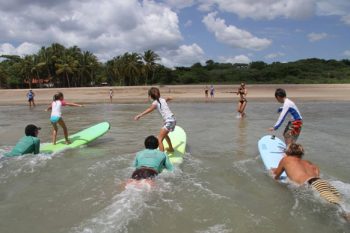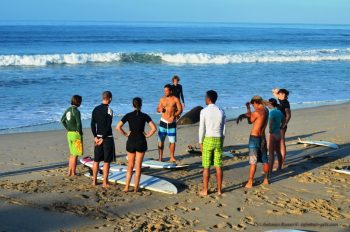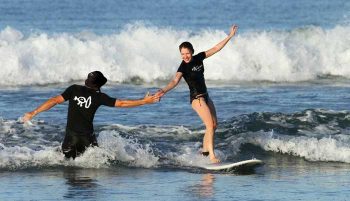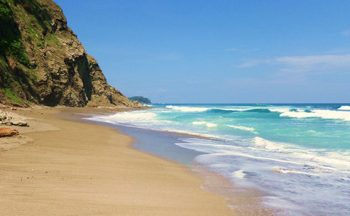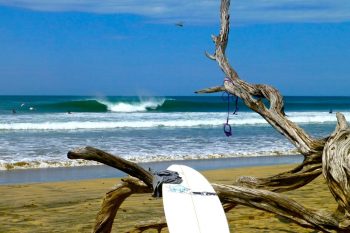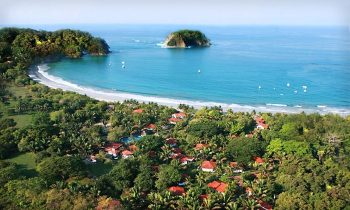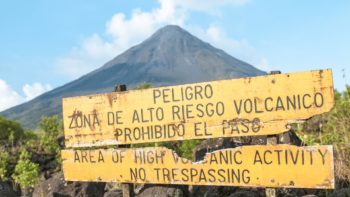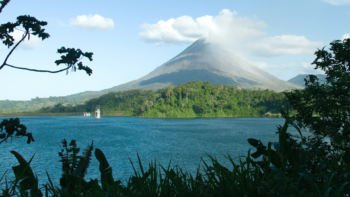The Beginner’s Guide To Surfing In Costa Rica
Costa Rica has been a hot spot surfing destination for many years now, as this tiny country boasts some of the best waves north of the equator, it’s also home to some of the best beginner breaks as well.
In this little guide to surfing in Costa Rica, we’re going to give you a few tips on how to get started, as well as some information on our favorite beginner spots.
Surf Lessons in Costa Rica – Top Tips
-
Be Prepared for the Water
While it’s difficult to practice surfing without actually just getting up and doing it, there are some things you should prepare beforehand. First off, you must know how to swim really well. Being able to swim well can help to boost your endurance in the water and allow you to accomplish more during your surf session instead of panting heavily on the beach. Less than 10% of a surfer’s time in the water is actually spent standing up and riding waves. The rest of that time is spent swimming and paddling around in the water.
Before you get out to surf, you should be comfortable with your ability to swim especially in the ocean. If you already feel that you are a great swimmer, but would like to work on other aspects such as endurance and flexibility; we’d highly recommend running, cycling, skating, or any other form of exercise with cardiovascular benefits.
-
Bring the Right Stuff
You’ll most likely be renting a board, if you’re learning to surf, which means you won’t have to worry about it long term. Renting is recommended and the easiest for first timers, but if you do decide to buy a surfboard be sure to consult a local surf shop or online guide before doing so.
You should be fine with surfing with a typical bathing suit. That being said, make sure the bathing suit that you pick will stay on when you bail. Too often we’ve seen new surfers, especially girls rocking little bikinis, totally lose their stuff when they hit the water hard. Unless you want to be the beach exhibitionist, we’d recommend choosing your attire carefully. Avoid skin irritation from the board wax with a bathing suit or rash vest. If you have long hair, don’t forget to tie it up so it doesn’t hang down in your face.
-
Be Patient
Not only is there a lot of patience involved in learning how to surf, but in surfing in general. Surfers are always hanging around, waiting for the rogue waves to subside, hoping for the perfect wave to come, or simply looking for any waves at all. Surfing teaches you to wait patiently and appreciate the beauty of the ocean around you. Many beginner surfers aren’t taught the value of patience from the start and they become frustrated.
Don’t second guess your abilities, commit to the waves available, and overall, be patient. Surfing is a sport that is often learned slowly. It requires many different skills and will take a ton of practice before it becomes second nature.
-
Bailing is Inevitable
While everyone wants to get to their first surf lesson and hit a perfect wave right off the bat, that’s just not how the world works. You’ll inevitably bail at some point or another, as it’s just part of surfing and everyone has been through it. Just remain calm and know that it is going to happen.
When you eventually fall in the water, don’t tense up and start freaking out. Stay calm, focus on finding the surface and get your board back. Trust us when we say this, make bailing a fun part of your experience. If you think about it as a negative thing, you will never move forward as a surfer.
-
Know About Rip Currents
Rip currents can appear on most beaches at different times throughout the day. If you’ve ever been to the beach, you’ve probably seen the lifeguards put out rip current warnings and close off certain parts of the water to casual beachgoers. Rip currents are strong yet narrow water currents that move in the opposite direction of the shore. It’s fairly easy to get caught in one and find yourself struggling aimlessly to get back to the beach.
If you find that you become caught in a rip current, the first thing you need to do is stay calm. Most new surfers will instinctually try and paddle against a rip current to get back to safety. It wastes energy and is ineffective, instead what you want to do is paddle parallel to the shore until you get to a calmer part of the water where the rip has ended. The ocean is a powerful thing, and it is much better to roll with it rather than try and fight it.
-
Get Your Pop Up Down
While it may be a little kooky, it’s important that you spend some time on the beach practicing your pop up. Lay your board down on a spot in the sand with a little hole underneath for your fin (or fins) to go in so it doesn’t break off. Position yourself on the board like a surfer would in a pushup position. Popping up is pretty much a quick and controlled pushup. Make sure to get your form down on the beach before you get out in the water so that you won’t need to worry about it as much once you’re deep in the surf.
-
Paddle Like a Knife
Getting past the whitewater, and into a spot where the waves have good energy, will take a bit of paddling, and will be your first step in getting out to the surf. When you’re paddling, find a sweet spot on your board and ride perpendicular into the waves. Too often we see beginner surfers chicken out and turn their board parallel to incoming waves, inevitably getting defeated by the wave and rolled back to shore. Face the wave and paddle right through it like a knife. Stay low to your board and duck dive a bit if you have to.
-
Always Take the Extra Paddle
Many beginner surfers fail to catch their few first waves simply because they aren’t paddling enough. No matter what level of surfer you are, this is always an important tip to remember. When you’re paddling into a wave and feel the energy of the wave start to lift you, you will feel inclined to pop up. Before you do, take a large extra paddle before you pop. This will help so you don’t get caught at the top of the wave, making your drop and ride much smoother.
Best Beginner Surf Spots in Costa Rica
Playa Tamarindo
Playa Tamarindo is probably the most popular beginner surf spot in all of Costa Rica. With tons of room to surf, a soft sandy bottom, tons of different surf schools to pick from, and plenty of rentals, you won’t have a hard time surfing here at all. The waves here are often mushy, whitewater waves, perfect for learning how to master your balance.
Playa Samara
Playa Samara is another great surf spot for beginners, as it has a nice, gentle break. The only problem with this is there needs to be a swell, as the water is completely flat and totally unfit for surfing without one. With a few surf shops in town and a beach that isn’t very crowded, this beach is ideal if you want to learn without a crowd watching.
Playa Guinoes
Our last favorite beginner surf spot is Playa Guinoes. There are tons of beginner-friendly breaks as you get close to shore, and the beach is massive, making it very easy to find your own spot to practice for the day. You can easily find an array of surf schools at Playa Guinoes, as well as rental shops to get your gear.
TL;DR:
Be prepared before you head off to your first surf lesson. Visit Playa Guinoes, spend some time on the beach learning your ‘pop up’, paddle straight into the wave, and give it an extra paddle before popping up. Overall, relax and realize it’s going to take some practice and patience. You will fail…a lot! Be safe, know about rip currents and your exertion limits. Surfing is a life lesson, not a sightseeing tour — drink it in.
Most surfers will rent an SUV for the higher clearance to explore the less visited beaches once they’ve gained confidence on beginner waves. Surf racks can be provided but don’t forget to bring your straps from home or get them from the surf shop. Leave all valuables in your hotel’s room safe and ensure that anything you do bring to the beach, such as your cell phone and a few small bills, are placed in a waterproof wallet to wear around your neck.
Post written with the help from the Center for Surf Research. Images courtesy of Fin Bin.

